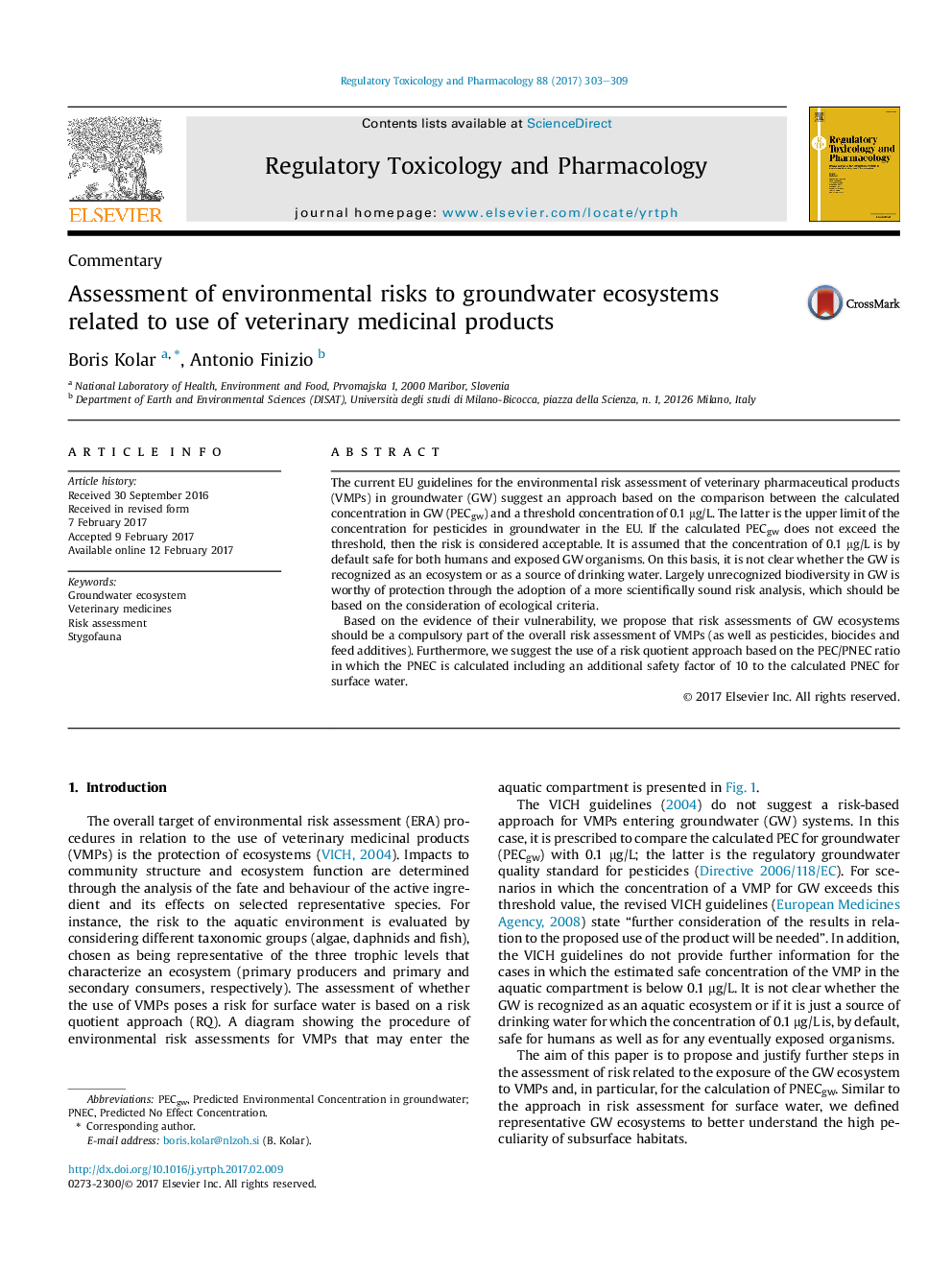| Article ID | Journal | Published Year | Pages | File Type |
|---|---|---|---|---|
| 5561133 | Regulatory Toxicology and Pharmacology | 2017 | 7 Pages |
â¢The concentration of 0.1μg/L is not safe for both, humans and groundwater organisms.â¢Characterization of groundwater ecosystems in the environmental risk assessment.â¢Groundwater ecosystems are more vulnerable than surface water ecosystems.â¢Justification of an additional safety factor in the groundwater risk assessment.
The current EU guidelines for the environmental risk assessment of veterinary pharmaceutical products (VMPs) in groundwater (GW) suggest an approach based on the comparison between the calculated concentration in GW (PECgw) and a threshold concentration of 0.1 μg/L. The latter is the upper limit of the concentration for pesticides in groundwater in the EU. If the calculated PECgw does not exceed the threshold, then the risk is considered acceptable. It is assumed that the concentration of 0.1 μg/L is by default safe for both humans and exposed GW organisms. On this basis, it is not clear whether the GW is recognized as an ecosystem or as a source of drinking water. Largely unrecognized biodiversity in GW is worthy of protection through the adoption of a more scientifically sound risk analysis, which should be based on the consideration of ecological criteria.Based on the evidence of their vulnerability, we propose that risk assessments of GW ecosystems should be a compulsory part of the overall risk assessment of VMPs (as well as pesticides, biocides and feed additives). Furthermore, we suggest the use of a risk quotient approach based on the PEC/PNEC ratio in which the PNEC is calculated including an additional safety factor of 10 to the calculated PNEC for surface water.
